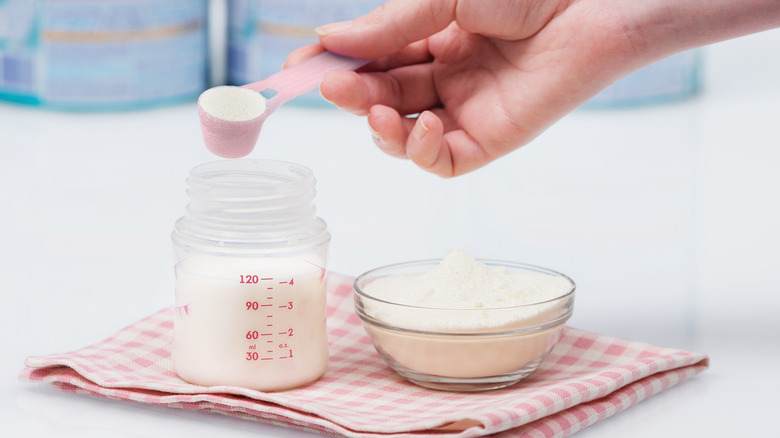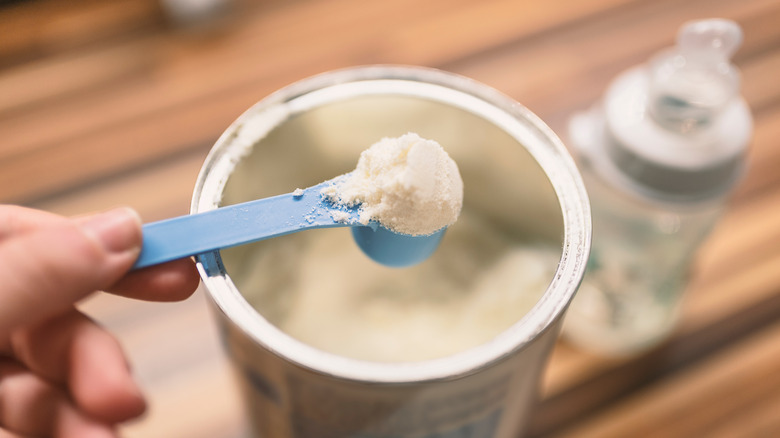The Latest Baby Formula Recall Update Leaves More Questions Than Answers
When baby formula gets contaminated with a foreign substance, the results can be detrimental. According to the CDC, the bacteria known as cronobacter sakazakii can make its way into dry food, including powdered baby formula, and can cause particularly bad illnesses in newborns. The formula powder can become tainted at home or at the factory where it's manufactured, and can easily become contaminated if it touches an infected surface. Over the past few months, Abbott Nutrition has recalled its baby formulas produced and distributed as Similac, Alimentum, and EleCare due to a cronobacter sakazakii contamination that has sickened multiple infants and resulted in at least two deaths, per The Wall Street Journal.
The recalled formulas, which came out of a plant in Sturgis, Michigan, became the focal point of an FDA investigation. The WSJ reports that Abbott representatives have defended the particular factory that made the formula, and the company has stated that its testers have yet to find traces of the bacteria at the facilities. The FDA has joined Abbott in attempting to track down the source of the contamination at the factory, but over the course of analyzing the germs, experts made some shocking finds that sparked even more questions.
Experts are unsure where the outbreak stems from
According to The Wall Street Journal, FDA investigators did find traces of cronobacter sakazakii in the Michigan baby formula plant, but after analyzing the strains of the bacteria found in the infants, experts determined that the two strains weren't related. As the baby formula recall expands, some believe that the contamination is potentially occurring in the homes of consumers, resulting in a cronobacter sakazakii infection that stems from a completely different source than the Abbott factory.
Scientists traced this theory and found one infant did, in fact, get contaminated by bacteria found in their home. The CDC currently doesn't have a strict protocol of how to track outbreaks of this particular bacteria, and some believe the source of the contaminant may never be found.
What's more surprising, the Abbott plant samples that contained cronobacter sakazakii came from areas of the building that had no contact with the baby formula powder, causing some to question how the bacteria could have spread to the food production area. The WSJ reports that inspectors discovered five different varieties of the bacteria inside the factory and a number of other health concerns like standing water in the food production area. It's unclear if these murky details led to some of the infant illnesses and investigators cannot definitively tell how this contamination occurred. No matter where the bacteria is coming from, scientists believe that action must be taken or the risk of future contamination could be incredibly high.

